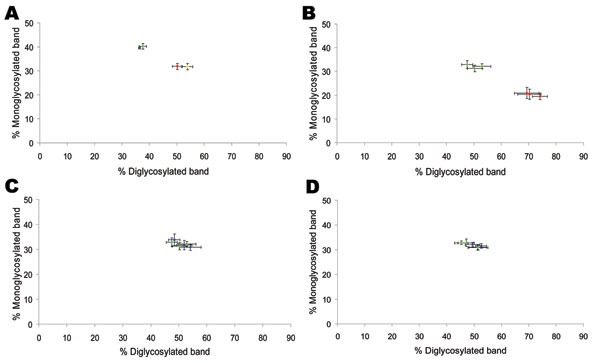Volume 13, Number 12—December 2007
Research
Phenotypic Similarity of Transmissible Mink Encephalopathy in Cattle and L-type Bovine Spongiform Encephalopathy in a Mouse Model
Figure 2

Figure 2. Glycoforms proportions (means ± standard deviations) of protease-resistant prion protein detected by using Sha31 antibody. A) Cattle transmissible spongiform encephalopathies (TSEs). B) First passage of L-type and typical bovine spongiform encephalopathy (BSE) into TgOvPrP4 mice. C) First passage of transmissible mink encephalopathy (TME) in cattle and L-type BSE into TgOvPrP4 mice. D) Second passage of TME in cattle and L-type BSE into TgOvPrP4 mice. Results from 3 individual mice from each experimental group are shown. Typical BSE in red, H-type BSE in yellow, L-type BSE in green, and TME-in-cattle in blue.
Page created: July 06, 2010
Page updated: July 06, 2010
Page reviewed: July 06, 2010
The conclusions, findings, and opinions expressed by authors contributing to this journal do not necessarily reflect the official position of the U.S. Department of Health and Human Services, the Public Health Service, the Centers for Disease Control and Prevention, or the authors' affiliated institutions. Use of trade names is for identification only and does not imply endorsement by any of the groups named above.